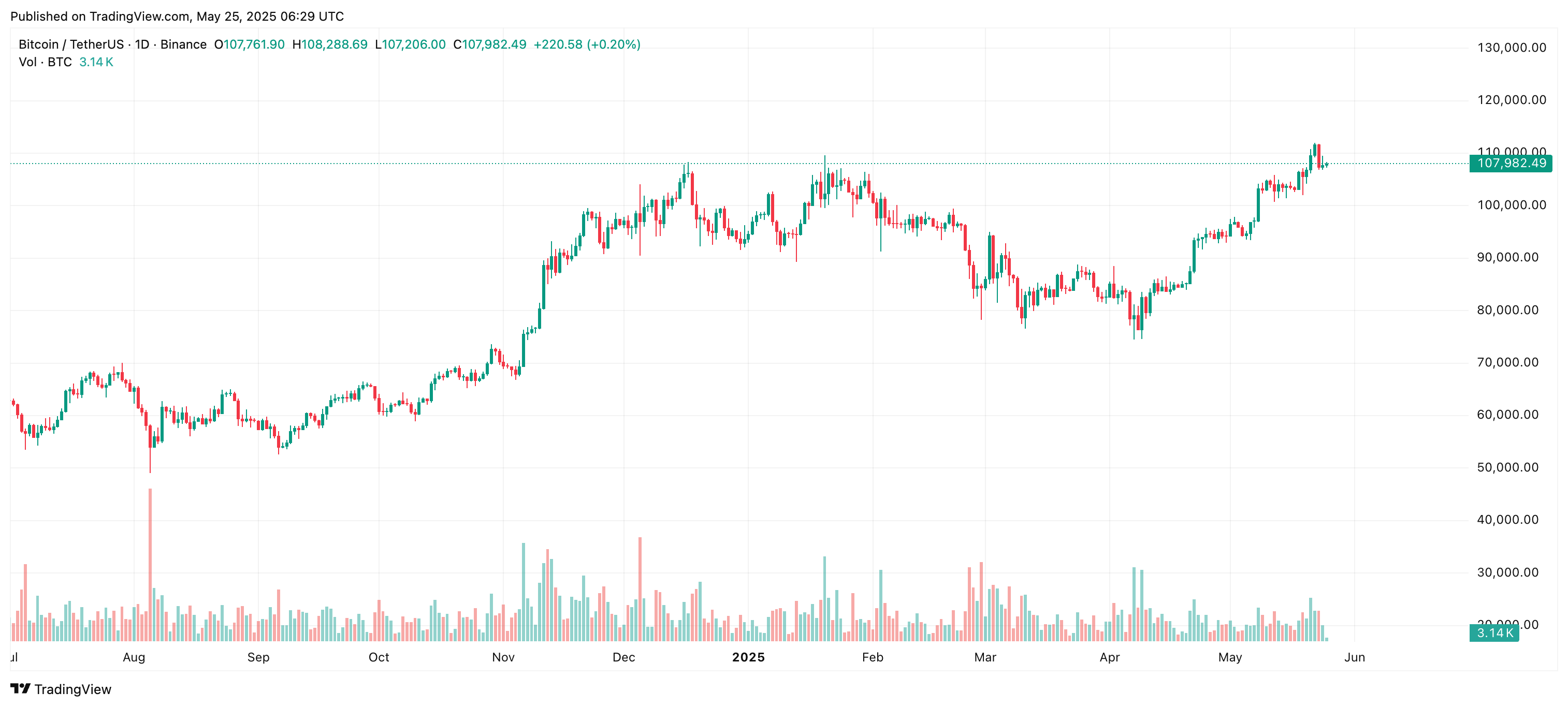Recently, Bitcoin  $106,242, the largest cryptocurrency, surged past $111,000. Experts believe this upward trend will persist, predicting Bitcoin may reach $125,000 by the end of the second quarter. Factors such as increased institutional interest, capital flows into spot Bitcoin ETFs, and a weakening dollar have accelerated Bitcoin’s position as “digital gold.” However, Trump’s 50% tariff threat on European Union goods compromised Bitcoin’s ascent, pushing the price below the $100,000 threshold.
$106,242, the largest cryptocurrency, surged past $111,000. Experts believe this upward trend will persist, predicting Bitcoin may reach $125,000 by the end of the second quarter. Factors such as increased institutional interest, capital flows into spot Bitcoin ETFs, and a weakening dollar have accelerated Bitcoin’s position as “digital gold.” However, Trump’s 50% tariff threat on European Union goods compromised Bitcoin’s ascent, pushing the price below the $100,000 threshold.
Factors Driving Bitcoin’s Surge to $125,000
Shunyet Jan, Head of Derivatives at Bybit, described Bitcoin’s current trend as a “unique combination.” He highlighted that regulatory clarity, institutional capital influx, and macroeconomic fluctuations hasten Bitcoin’s mainstream acceptance. Over $1 billion weekly inflows into spot Bitcoin ETFs showcase institutional trust in the leading cryptocurrency.

Jan pointed out that Bitcoin’s inverse correlation with a weakening dollar positions it as a hedge. Additionally, regulations like the GENIUS Act in the U.S. strengthen the country’s crypto infrastructure, bolstering investor confidence. With these factors persisting, reaching Bitcoin’s $125,000 target seems imminent.
According to Blockstream CEO Adam Back, Bitcoin is still “not overvalued” and could aim for $500,000 to $1 million in this cycle. Institutions such as Standard Chartered and Bernstein highlight the market’s long-term potential with forecasts ranging from $200,000 to $500,000 for 2025-2029. However, short-term political risks like Trump’s tariff measures pose a downward threat to the entire market.
Altcoins Face Limited Growth Prospects
While experts remain optimistic about Bitcoin, they maintain caution regarding altcoins. Jan asserts that major altcoins like Ethereum (ETH)  $2,534 could trail Bitcoin, yet high-interest rates and global uncertainties may restrict altcoin performance. Notably, the higher volatility of smaller coins dampens investors’ risk appetite.
$2,534 could trail Bitcoin, yet high-interest rates and global uncertainties may restrict altcoin performance. Notably, the higher volatility of smaller coins dampens investors’ risk appetite.










